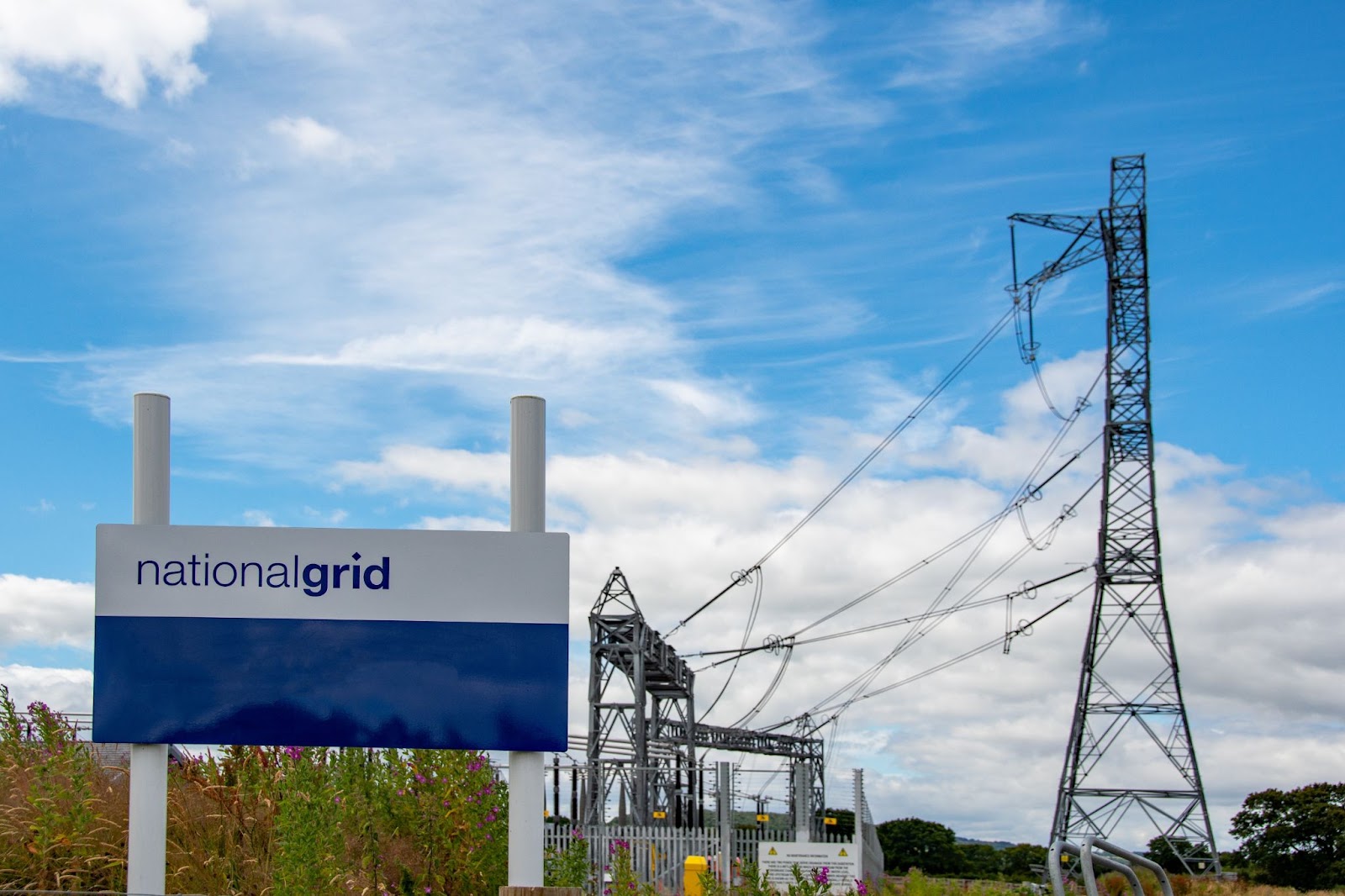 19 Nov
19 Nov In hospitality, every penny counts and with rising gas and electricity prices a lot of the budget can be lost on energy bills, meaning energy management has become essential for the success of a hotel. With the right approach there are ways to negate some of these costs, improve hotel sustainability credentials and be prepared or protected from any further energy price hikes. This blog highlights some of these energy saving methods and ways to avoid overpaying at this time when prices are already so high – from basic habits to finding the best business energy suppliers.
Prioritising energy monitoring
When beginning the energy monitoring process, you should always start by ‘benchmarking’. This means comparing your hotel energy usage to other similar-sized hotels to see if you’re using more energy than is average.
Smart meters can record where energy is being used effectively and where it is being overused. For example, you may be losing money by heating unused rooms in non-peak times of year. Half-hourly electricity meters are often seen as the best for businesses as they submit accurate readings every half hour. If you regularly review the data then you can change your energy consumption habits to maximise energy efficiency of your hotel, leading to significant savings.
The appeal of sustainability
Energy-efficiency isn’t only about cutting costs, it’s also about customer satisfaction and expectations. In the UK more and more travellers are looking for sustainable practices implemented across different operations and companies (including hotels). Simple changes like motion sensor lights in hallways, reduction of plastic in hotel toiletries and the promotion of renewable energy all contribute to a hotel’s eco-friendly image.
Increasingly renewable energy can be accessed from a grid network and cost very similarly to standard electricity packages. If you go for one of these options, highlighting your green-energy efforts can appeal to new customers and potentially investors or corporate clients focused on sustainability.
Finding the right energy provider
The main way you can reduce your energy bills is by sourcing the right energy provider or supplier. This prevents you from remaining fixed into inefficient contracts and allows you to branch out to different forms of energy where you may want to. You can also form new energy contracts or tariffs that prevent you from facing any additional price hikes.
Partnering with D-ENERGi
At D-ENERGi we work closely with hospitality clients across the country and are dedicated to fitting different operational needs and desires.
Our plans range from business gas and electric to 100% UK wind-powered green energy, if that’s what suits your hotel. With 23 years of experience in sourcing and providing energy for businesses, we have the expertise to help you navigate what option is most functional for you and save on your energy bills. We provide the personal, reliable service that big energy suppliers can’t match.
Our price-matching ensures that you get highly competitive pricing which is reflected in our excellent 4.3-star rating on Trustpilot. Many of our customers have stayed with you for over a decade.
So, why not make the transition before energy bills get to their most expensive over winter. Take control of your energy costs and contact D-ENERGi today for a free, no-obligation quote and to find out just how much you could save.
Read Article 7 Nov
7 Nov Running a care home comes with big operational expenses, and one of the most pressing challenges for managers is tackling rising energy costs. Fully functioning heating, lighting and laundry are essential to maintaining care home residents’ comfort and safety, but they also make care homes very energy-intensive. With energy prices fluctuating, it’s more important than ever to find practical ways to cut costs without compromising the quality of care. This blog provides some basic information on how to implement proactive techniques to lower these costs and partner with expert business energy suppliers.
Why are energy bills rising?
There are several reasons why energy bills have become more expensive in recent years. Wholesale gas and electricity prices are volatile, and inflation and changing government levies have added to the total cost. These price rises can particularly affect care homes due to their around-the-clock operations, making energy use difficult to control.
Practical ways to reduce energy use
Whilst there is nothing we can do to change the wider energy market, there are steps that can help to reduce energy consumption.
Energy-efficiency
Here are some tools and tips to improve energy efficiency: Change your fluorescent lighting to LED
Install smart thermostats
Ensure windows and doors are shut
Maintain equipment regularly (boilers, washing machines, etc.)
Monitor and track energy usage
The best way to track energy usage is to use smart meters. These meters allow you to submit your own readings regularly and ensure that you will be charged for exactly the amount of energy you have used.
Consider a half-hourly electricity meter, which automatically submits readings to the energy supplier every 30 minutes. This is the most accurate arrangement, meaning you will not get overcharged. It also means you can see where and when you use the most energy and if you can implement changes in those specific windows to save money.
Staff awareness
Ensure that the staff is trained or informed about energy efficiency, whether that is turning off unused appliances or lights, making sure windows and doors are firmly closed, or submitting regular meter readings (if you don’t choose a half-hourly tariff).
Consider renewable energy options
Looking into renewable energy options is not only sustainable for the environment, but it can also stabilise costs in the long run.
Equally, with the growing global discourse around climate action, using green energy can make your care home stand out, which could increase your client base.
Why care homes choose D-ENERGi
At D-ENERGi, we are proud to support care homes and charitable organisations in taking control of their energy costs. We are honoured to be a Silver Sponsor of the Surrey Care Awards 2025 and a trusted supplier on carehome.co.uk. Our price-matching ensures you always receive competitive rates. In addition, as a registered care home, you may qualify for VAT and Climate Change Levy exemptions, reducing your energy bills even further.
We offer a range of flexible energy options, from business gas and electric plans to 100% UK wind-powered green energy (on request), so you can choose what works best for your organisation. With an excellent 4.3-star rating on Trustpilot, we have built a reputation for fair pricing and outstanding customer service and support. We pride ourselves on providing the personal touch that big energy suppliers can’t match.
If you’re ready to lower your care home’s energy costs, contact D-ENERGi today for a free, no obligation quote and to discover how much you could save.
Read Article 28 Oct
28 Oct Charities often provide vital work while simultaneously needing to fit tight budgets under high demands. One pressure that doesn’t usually get enough attention is the need for energy. Rising utility bills, ageing buildings and limited financing can strain charities and hinder their ability to advance their causes. Below, we explore some of the main energy challenges that charities face and how they may navigate them.
Challenges
Increasing energy costs
Bills rising Charities are not immune to the rising energy prices we have all been subject to in the UK. A 2022 study by PBE found that more than half of charities experienced bill increases of 50% or more. Some small charities have even had to cut services or reduce staff because of the rising cost of essentials like lighting or heating.
Building costs Most charities are also based in community buildings like town halls, many of which fail to meet basic energy standards. As a result, organisations and studies are calling on the government for funding, though this has not yielded results.
Contract bill payments Many charities overpay for energy due to expensive default contracts. Other costs
As charities are concentrated on supporting a cause, their costs can often be focused on that area and losing money on basics like energy bills can create a moral dilemma.
Potential solutions
Improve energy efficiency
Improving energy efficiency with LED lights or better insulation could be an effective way for charities to rein in their energy costs over time. However, as many charity organisations do not own their premises, these alterations and implementations are difficult.
Apply for grants
Grant options for charities frequently change; a couple of current options are outlined below:
Building maintenance The Rose Foundation offers grants between £5000 and £10,000 to registered charities in London to help upgrade buildings.
Energy costs Energy efficiency sharematch fund aids community groups in securing funds for energy-efficient upgrades.
Switch energy supplier
Switching energy suppliers can seem intimidating – especially if your focus is necessary elsewhere – but once done, it can lead to significant savings.
Switch to renewable energy
Switching to renewable energy methods can reduce both bills and a business’s carbon footprint, but it still comes with challenges. The Energy Saving Trust found that charity-led energy schemes can lack long-term revenue certainty. This means the charities might not recoup the initial investment in renewable energy sources. Therefore, it is paramount for them to seek professional advice.
Whilst renewable energy sources like solar may pose this issue (and prove difficult for those renting community buildings), renewables like wind energy can be consumed remotely from wind farms.
How D-Energi can help
Sourcing and affording energy for charities is undeniably challenging. However, many charities can reduce that burden by focusing on energy efficiency, exploring renewables and actively managing supplier choices.
If your charity is interested in how to switch business energy suppliers for charity businesses or you’re wondering which business energy suppliers may be the right fit, D-Energi is here to support you. We strive to provide businesses with the best electricity and gas prices, helping you use energy more wisely and sustainably.
Our offers on wind-powered renewable energy can also present long-term savings that support the future of your organisation. You can feel good about your low bills and positive environmental impact, relying on 100% UK wind-farm energy.
If you’d like to discuss your energy options, get a free quote today, we’d be happy to help tackle this challenge!
Read Article 17 Oct
17 Oct We are excited to share that D-ENERGi is a Silver Sponsor of the Surrey Care Awards 2025, taking place on 14 November at Denbies Wine Estate in Dorking. This fantastic event shines a light on the dedication and hard work of teams and individuals in the care sector throughout Surrey. We’re proud to present the “Nursing Home of the Year” Award!
With over 23 years of experience, we are serving over 600 Care Homes in the UK. We pride ourselves on delivering a personalised experience. Each of our customers is supported by a dedicated account manager, ensuring that you receive exceptional service tailored to your needs.
At D-ENERGi, we believe in putting our customers first. That’s why we ensure that your calls will be answered within three rings — no automated menus, just friendly energy experts ready to help. We are also proud to be finalists in two categories at the Energy Awards 2025: Energy Supplier of the Year and Campaign of the Year – Customer Satisfaction.
We are honoured to support and celebrate the incredible contributions of those in the care sector!
If you’d like to receive a free energy quote, please fill out our form or call us on 0800 781 7626.
Get A Free Quote
See photos of Surrey Care Awards 2024
Read Article 15 Oct
15 Oct Recently, the National Energy System Operator (NESO) published its Five-Year View, regarding the Transmission Use of System (TNUoS) and the charges associated with it. With this in mind, businesses need to consider how their monthly electricity bills are going to change. Understanding TNUoS charges is an essential part of proper budgeting.
We’ve already given a breakdown of the impending updates, but this blog will offer a little more context, insight and advice, ensuring businesses can prepare properly for changes.
What are TNUoS charges?
These are the charges that electricity companies pay for using the National Grid. The money is used for the installation, operation and maintenance of the Grid, and while the suppliers pay them, they pass the costs directly onto customers through electricity bills.
The primary things impacting the size of these charges are the Allowed Revenue – the maximum money grid operators can make according to Ofgem – and the Transmission Demand Residual (TDR) – a fixed daily charge that accounts for most of the cost borne by businesses. This daily charge is based on each site’s voltage and capacity band. The TDR is defined by its ‘recovery amounts’, as in the figure the system operator is obliged to collect.
What’s changing with TNUoS charges?
The Five-Year View has outlined some fairly significant changes to TNUoS charges, such as:
Allowed Revenue is projected to rise £5.1 billion in 2025/26 to £8.9 billion in 2026/27.
TDR recovery amounts are increasing from £3.8 billion in 2025/26 to £7.5 billion in 2026/27 and further rises thereafter.
TDR tariffs is projected to be approximately 1.57p/KWh for 2025/26, escalating to around 3.05p/KWh in 2026/27.
NESO has made some adjustments to the locational components of TNUoS tariffs, although the TDR tariff will account for most charges.
Why are TNUoS charges increasing?
The increases in TNUoS charges are mostly the result of massive investment into fortifying the grid for renewable energy in pursuit of Net Zero, with upgrades and reinforcements costing tens of billions. Ofgem’s going into a new regulatory period, RIIO-ET3, with funds collected in this period powering the new changes.
How do TNUoS charges impact your business?
TNUoS charges increasing means higher electricity bills for everyone. The charges are expected to essentially double by 2026/27, and there’s no way to tell how much higher they might rise. Frustratingly, this increase is based on fixed charges, unaffected by smart energy consumption management.
Key consideration for business owners
Every business owner needs to be more conscious of their energy, and indeed, overall budgeting. Some important considerations should include:
Checking your contract terms for “pass-through” clauses that override fixed-price agreements
Reviewing your site’s energy capacity and determining whether it could be lower, to lower your TDR band
Keeping track of and attempting to manage all flexible costs, such as locational or time-of-use charges
Stay informed about TNUoS charges
If you’re interested in energy management or want to get a quote for your business, make sure to visit D-Energi. We provide a range of resources, updates and affordable business energy contracts to support companies in this uncertain market landscape.
Read Article 10 Oct
10 Oct With rising electricity costs and increasing focus on sustainability, engineering firms must manage energy intelligently. The industry is crucial to society’s advancement, making efficient energy technologies essential. This blog will explore some beneficial energy techniques and how professional help can secure engineering businesses with low-cost energy.
Energy and the engineering sector
The engineering industry encompasses many fields, ranging from aerospace engineering that focuses on the planning and manufacturing of aircraft or space technologies, to civil engineering which is about the construction and maintenance of infrastructure. Therefore, energy levels and sources vary depending on the specific position. Here are a few sectors, and a closer look at their energy consumption or distribution:
Biomedical
Biomedical engineers create medical technologies, requiring significant energy for testing and construction. Many prioritise renewable energy as it lowers costs over time in this high-demand industry.
Civil
Many civil engineers are trained in energy or environmental engineering, which means they prioritise energy efficiency when constructing new infrastructure. This includes implementing: Better insulation
Installation of renewable energy sources
Smart grids that monitor energy usage to prevent overcharging and save energy
Electrical
Electrical engineers design and maintain electrical systems, so they must prioritise energy efficiency. While the industry is shifting towards renewable resources for long-term sustainability, continuous improvements are also being made to non-renewable sources to maximise efficiency where renewables aren’t viable.
Why do renewable sources save energy?
Renewable energy, despite the high initial costs, offers unlimited and efficient power, leading to long-term savings.
Types of renewable energy
Wind power, in particular, is well-suited for industrial operations that need to respond to consistent demand. Wind produces clean energy at scale and can be sourced remotely from wind farms. Relying on wind has secure longevity, as it is not dependent on volatile fossil fuel markets. This consistency will save your company money and hassle in the long run.
Solar energy tends to be more popular in smaller industrial operations. For example, food manufacturing engineering requires electricity for cooling and packaging food and drink products.
Hydropower or hydroelectric energy are water generated powers. These are used mostly in computer engineering or electrical engineering fields as it is a constant source year-round and is potentially more consistent than solar or wind power.
How to access this energy
In order to prioritise, implement or consume these energy sources, engineering businesses will work with a trusted energy supplier that can provide them with the best deals and support their advancements.
Ways to reduce energy costs in manufacturing and engineering
Like with any business, engineers can benefit from some key basic tips: Half-hourly electricity tariffs provide accurate cost tracking (and mean you won’t be overcharged due to inaccurate estimations).
A professional evaluation will establish suitable options.
Switching to renewable energy source will save you money in the long-run.
Securing a reliable business electricity suppliers for fitting tariffs and protection from price hikes.
Go with D-ENERGii
At D-ENERGi, we work closely with engineering and industrial firms to help reduce energy usage, optimise ideal contracts and/or help companies transition to cleaner and greener power.
We can provide 100% UK wind-farm energy so that you can reap the benefits of a lasting and renewable source. For those contemplating the best energy source, we can also offer expert advice and consider what’s best for your business.
Get a free energy quote today for your business and invest in the future of your industry.
Read ArticleSign Up For The Latest News and Insights on Market Trends
"*" indicates required fields





